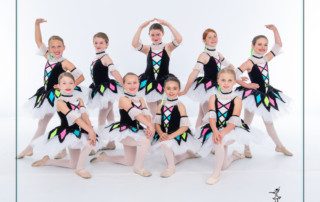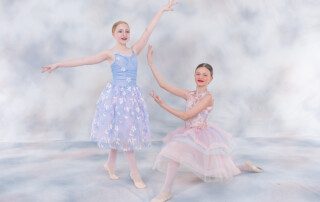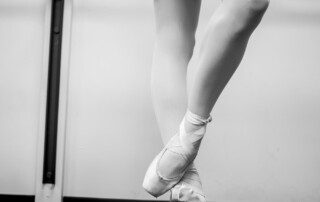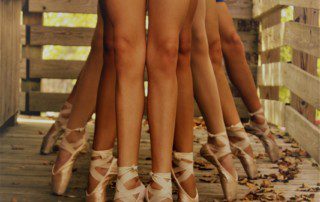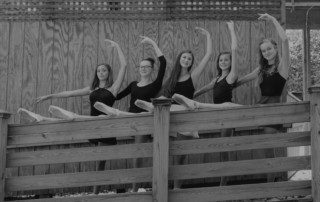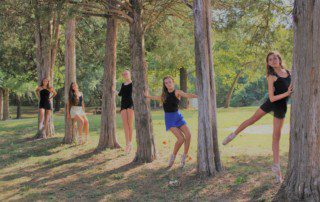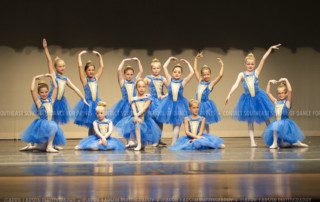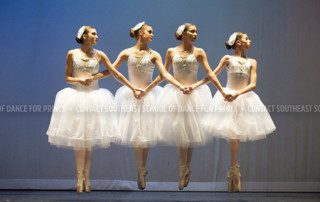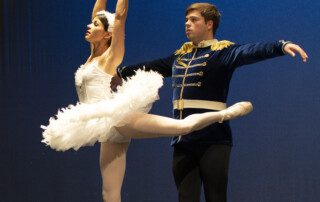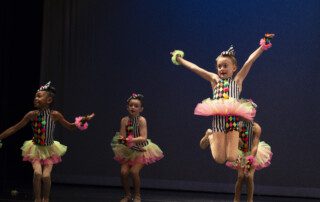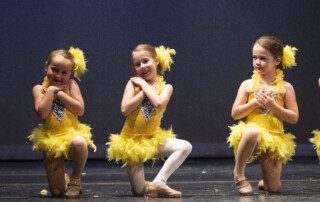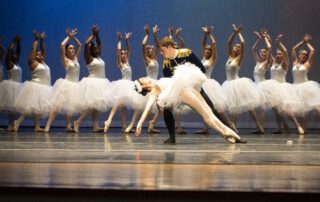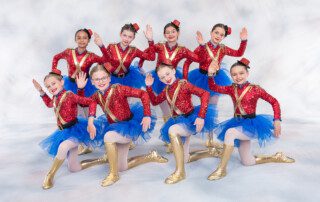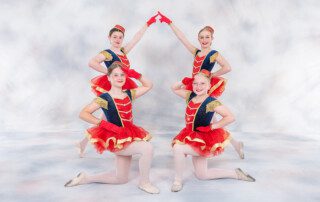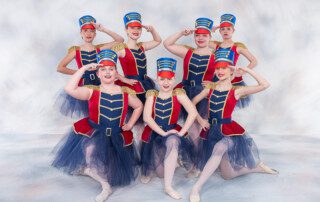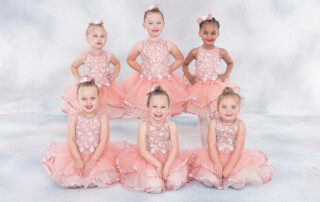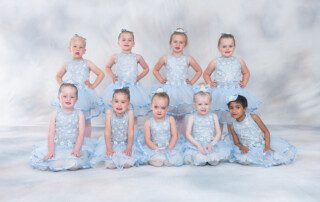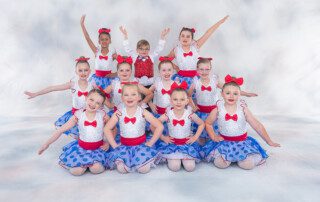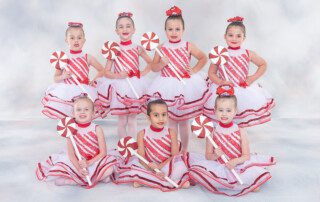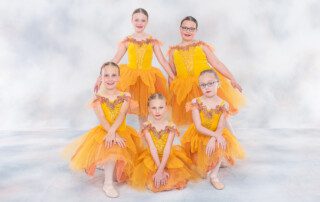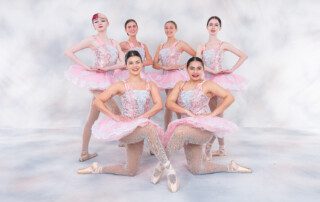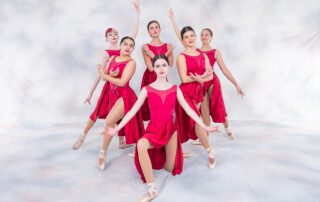Ballet & Pointe
We are pleased to offer six levels of ballet classes, with our highest level including pointe work. Dancers aged 5.5+ are eligible to begin our Ballet/Tap/Jazz 1 class, where basic technique is introduced. Level 2 introduces a traditional barre warm up and basic combinations in the center and across the floor. More complex combinations are given in level 3-4, and dancers are encouraged to explore their personal artistry. Levels 5 & 6 are our highest and most difficult levels, which includes advanced steps and combinations, conditioning and deep stretching, and pointe work-by instructor invitation and permission.
Ballet has a rich history as an elaborate and specific technique. Ballet is a type of performance dance that originated in the Italian Renaissance courts of the 15th century and later developed into a concert dance form in France and Russia. It has since become a widespread, highly technical form of dance with its own vocabulary based on French terminology. It has been globally influential and has defined the foundation techniques used in many other dance genres.
During the early Romantic Movement of the early 19th century, ballets like Giselle and La Sylphide portrayed women as gentle and fragile while exploring magic and the supernatural. The calf length romantic tutu was very popular during this period.
In the late 19th century, as ballet’s popularity soared in Russia, ballets like The Nutcracker, Swan Lake, and Sleeping Beauty were born. These very popular ballets focused on showing off classical technique-turn out, high leg extensions, and intricate pointe work. Shorter tutus were introduced to highlight the complex choreography.
Ballet continued to change throughout the 20th century, especially when George Balanchine (originally from Russia) brought his innovations to American ballet. He is famous for “plot-less” ballets; the first ballets that did not tell a story but instead, highlight music and movement.
Today, ballet continues to change as choreographers and dancers experiment with other styles. Classical ballets present each dancer with a unique challenge, while contemporary ballet allows dancers to explore their own creativity.
Ballet At SESD
We are pleased to offer six levels of ballet classes, with our highest level including pointe work. Dancers aged 5.5+ are eligible to begin our Ballet/Tap/Jazz 1 class, where basic technique is introduced. Level 2 introduces a traditional barre warm up and basic combinations in the center and across the floor. More complex combinations are given in level 3-4, and dancers are encouraged to explore their personal artistry. Levels 5 & 6 are our highest and most difficult levels, which includes advanced steps and combinations, conditioning and deep stretching, and pointe work-by instructor invitation and permission.
Ballet Evaluations:
- Ballet students in levels 2 and above are evaluated twice a year. Mid term evaluations are in December and returned in January, and final evaluations are held in March or April.
- Evaluations enable instructor, parent, and student to track progress over the course of the year, and from one year to the next. Dancers and parents are encouraged to review evaluations every month or so to remember previous corrections and consider what has improved and what needs a little extra attention.
- Categories include technique, various steps/skills, musicality, professionalism, class attire, absences, etc.
- Did your dancer have an “off” day? No need for extra stress; evaluations are only 2 weeks out of the entire season, but we consider dancer’s performance and behavior in class throughout the entire year.
- Evaluations take place in your dancers regular class time.
- Dancers should arrive in correct attire and a few minutes early to remove warm ups and put on ballet slippers. We will begin promptly at class start time.
- We may record class to review later in order to give detailed comments and accurate scores. These videos are for instructor use only and will not be copied, distributed, or posted.
- Please remember that evaluations are confidential—dancers and parents should not discuss any scores with other students or parents. Evaluations are intended to create growth, not division–in or out of class.
- While reviewing your evaluation, please keep the following points in mind:
- The score is NOT as important as the corrections/comments. It is completely normal and expected for a dancer to receive “1”-“3” on her mid-term evaluations. Final evaluations are usually scored “2”-“5”. Numbered scores are included to simplify the promotion process, which leads to the next point…
- It is perfectly normal, and even EXPECTED, for a dancer to spend anywhere from 2-5 years in any given level. We offer 5 levels of ballet from beginning at age 5.5; it is impractical to expect any dancer to progress one level each year. Class promotion should not be a dancer’s only goal. It is important to focus on the present; carefully listening to and applying corrections from your instructor.
- Our ultimate goal is to build each dancer’s strong technical foundation. A correct understanding of basic technique will take her very far, while moving too quickly will hinder her for a very long time.
- While we only require conferences at the end of the season, we are always happy to schedule a time to meet and discuss your dancer’s progress and address any concerns you may have. Your dancer is our top priority!
Pointe
Pointe work is every ballerina’s dream! Pointe work is very demanding; physically and mentally, but a properly trained dancer will be successful!
Eligibility Requirements:
- Dancers need to be age 12 or older to begin pointework. At this age, the growth plates in their feet are closed, and there should be no damage to the foot.
- Dancers should be enrolled in ballet and consistently attend ballet classes in the Summer, Fall, and Spring sessions for at least two years in order to be eligible for pointe consideration.
- Dancers should be taking three days of ballet classes.
- Dancers should be dedicated to their training; regularly attending class is imperative. Missing days or weeks of class can undo all the hard work they put in. The feet and ankles need consistent training in order to keep and continue building strength.
- Dancers must be in good health and able to take a whole class. If student frequently needs to rest because of illness or injury, she is not strong enough for the extra demands that pointe work requires.
- Dancers must have sufficient strength to do the following:
- Be able to hold their turnout while dancing
- Have a strong, straight back while dancing, especially the lower back
- Keep the heels forward towards the big toe (no sickling)
- Use plié while dancing (knees over toes, heels down)
- Point their feet while dancing
- Pique to retire with straight leg
- Be able to do 16 relevés in the center without stopping (as high up on half-pointe as possible)
- Be able to hold a retire balance on demi-pointe
- Dancers must be responsible (in correct attire, hair style, all shoes and other class necessities each week), pay attention in class, and work well as an individual and as a part of the group as a whole. Going en pointe is a big step and requires commitment.
Spring Ballet:
- Each year, our Creative Movement, First Steps, Foundations, and Ballet 1-6 dancers perform a full-length “story ballet.” Story ballets are a staple of classical ballet training, and add a unique experience to each ballerina’s journey!
- Click here for more information about our Spring Ballet & Solo Role Auditions & Extra Rehearsals for Spring Ballet
